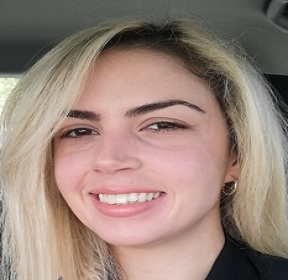
Niti Argyri
Biohellenika Sa GreeceTitle: Preparation if innovative and advanced antimicrobial skin regeneration patches supplemented with extracellular matrix components and stem cells
Abstract:
Statement of the Problem: Wound healing takes place in successive but overlapping stages involving cells, bioactive agents, and the extracellular matrix. In the last decades, our better understanding of the mechanisms involved allowed the generation of several so-called "bioactive" patches for the treatment of chronic and difficult wounds. The present study aims to synthesize and characterize a long-acting bioactive patch consisting of copolymers with inherent antimicrobial properties, reinforced with Arg-Gly-Asp (Arginylglycylaspartic acid - RGD) peptides and adipose mesenchymal stem cells (AMSCs).
Methodology & Theoretical Orientation: For this purpose, 2 types of co-polymers were synthesized and tested. 1) Copolymers of a biocompatible aliphatic polyester (TEHA-co-PDLLA), patterned with micro pyramids using thermal Nanoimprint Lithography (T-NIL), which enhance the antimicrobial activity of L-poly(lactic acid) (PLLA), an aliphatic polyester with biodegradability, biocompatibility and exceptional mechanical and thermal properties and 2) copolymers of chitosan (CS) enriched with increased amounts of SBMA (CS-SBMA) with the inherent antimicrobial property of the base material, i.e. CS. CS is a linear semi-natural polysaccharide derived from chitin, which is a biocompatible, biodegradable, and non-toxic polymer with enhanced antimicrobial and antioxidant activity. Moreover, the tripeptide RGD is found in all major ECM proteins and has been shown to enhance the adhesion and spreading of fibroblasts, endothelial cells, and smooth muscle cells on different surfaces. Finally, ASCs have an important role in the healing process of the skin through their metabolic activity and release of bioactive molecules, such as growth factors. AMSCs were isolated by a human donor through enzymatic digestion. Then, the copolymers were primarily validated for their biocompatibility properties via MTT assay using AMSCs. Both copolymers were supplemented by coating the RGD peptide on their surface and further enhanced by seeding AMSCs. To optimize the conditions for the best bioactivity of the final product, we initially assayed the response of AMSCs to different concentrations of the RGD biopeptide (10, 20, 50 μg / ml) considering: 1. proliferation/viability/cytotoxicity by MTT and 2. cell adhesion with crystal violet cell adhesion assay. To further evaluate the potential biological activity of the final patches, the expression of genes that induce angiogenesis in AMSCs was assessed using RT-PCR. Finally, the candidate copolymers were assessed for their antimicrobial potency against Escherichia coli (gram-negative) and Staphylococcus aureus (gram-positive).
Findings: The above experimental procedures showed induction of cell adhesion in the presence of RGD in a dose-response manner suggesting a biological relevance. However, cell proliferation in ASCs was inversely proportional to the RGD concentration. Therefore, the minimum RGD concentration was chosen for the maximum biological activity of the final patch. This is due to the potential cytotoxicity of the peptide or the degree of cell attachment to the material. The strong attachment of cells to the substrate is incompatible with the process of cell proliferation in which cells "loosen" their attachment to divide. Lower concentrations of RGD were also examined but there was not a significant improvement. As for the expression of vasoactive agents in AMSCs, we have a clear induction only in the patch of CS-SBMA. In vitro TEHA-co-PDLLA patch evaluation showed that the presence of RGD did not improve significantly cell adhesion, proliferation, or VEGF / Angiopoietin-1 expression in the final product. This may concern the topography and the properties of the material. Perhaps coating the material on its entire surface with the RGD peptide may have had negative consequences on the overall properties of the material, and perhaps its controlled placement during material preparation should be attempted. As for the antimicrobial properties, both patches showed satisfactory results, the CS-SBMA due to the chitosan’s properties, and the TEHA-coPDLLA due to the nanostructures that prevent the growth of pathogenic microorganisms due to their geometry and arrangement in space.
Conclusion & Significance: In conclusion, both TEHA-co-PDLLA and CSSBMA in vitro patches exhibit some bioactive properties that could be important for inducing wound healing. At present, our data suggest that the patch based on CS-SBMA and enhanced with RGD and AMSCs exhibits superior angiogenic and proliferating properties which might be beneficial for the improvement of wound healing. Further improvement of TEHA-co-PDLA could be achieved by using different approaches to the delivery of the RGD onto the patch's surface.

